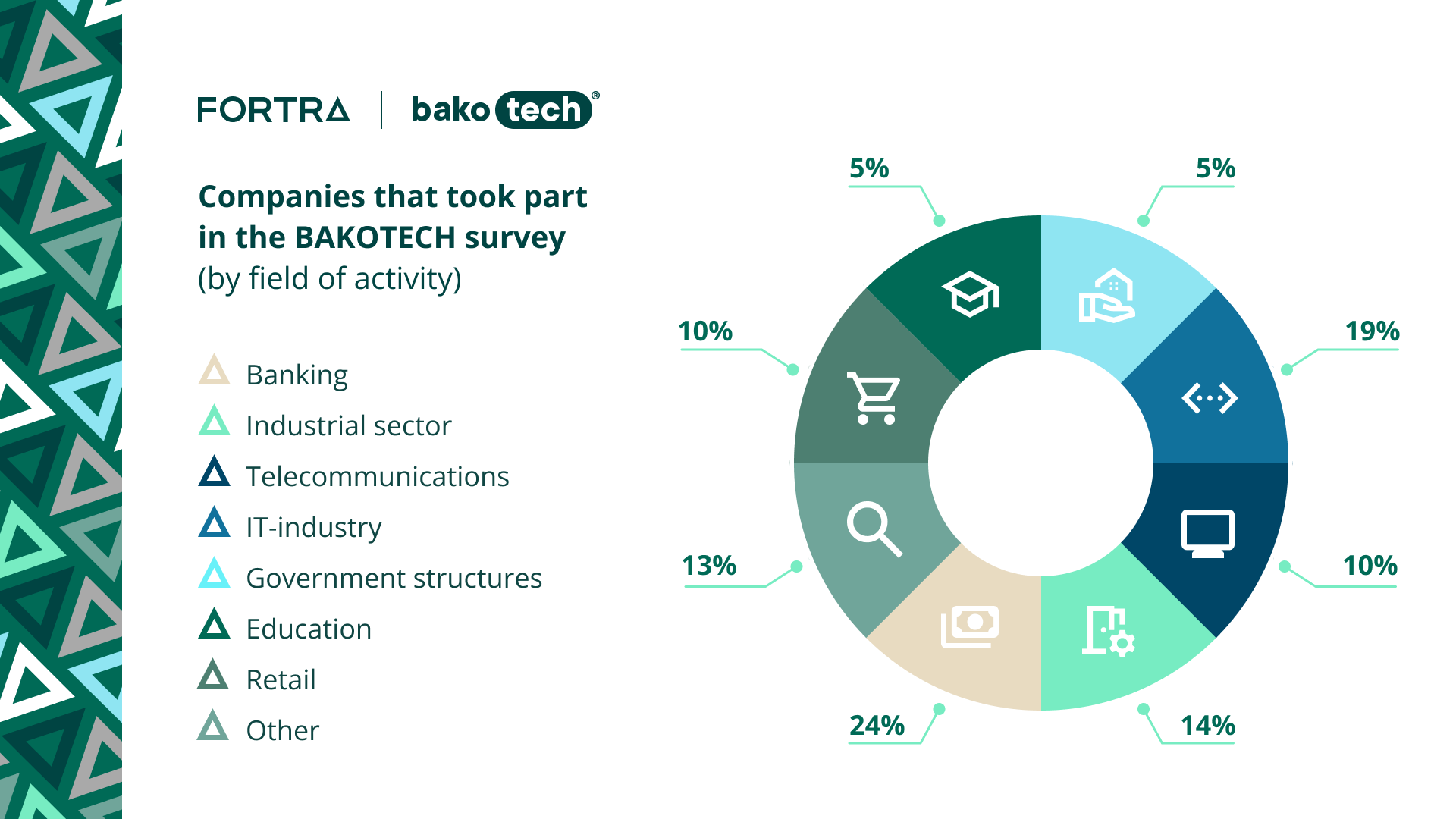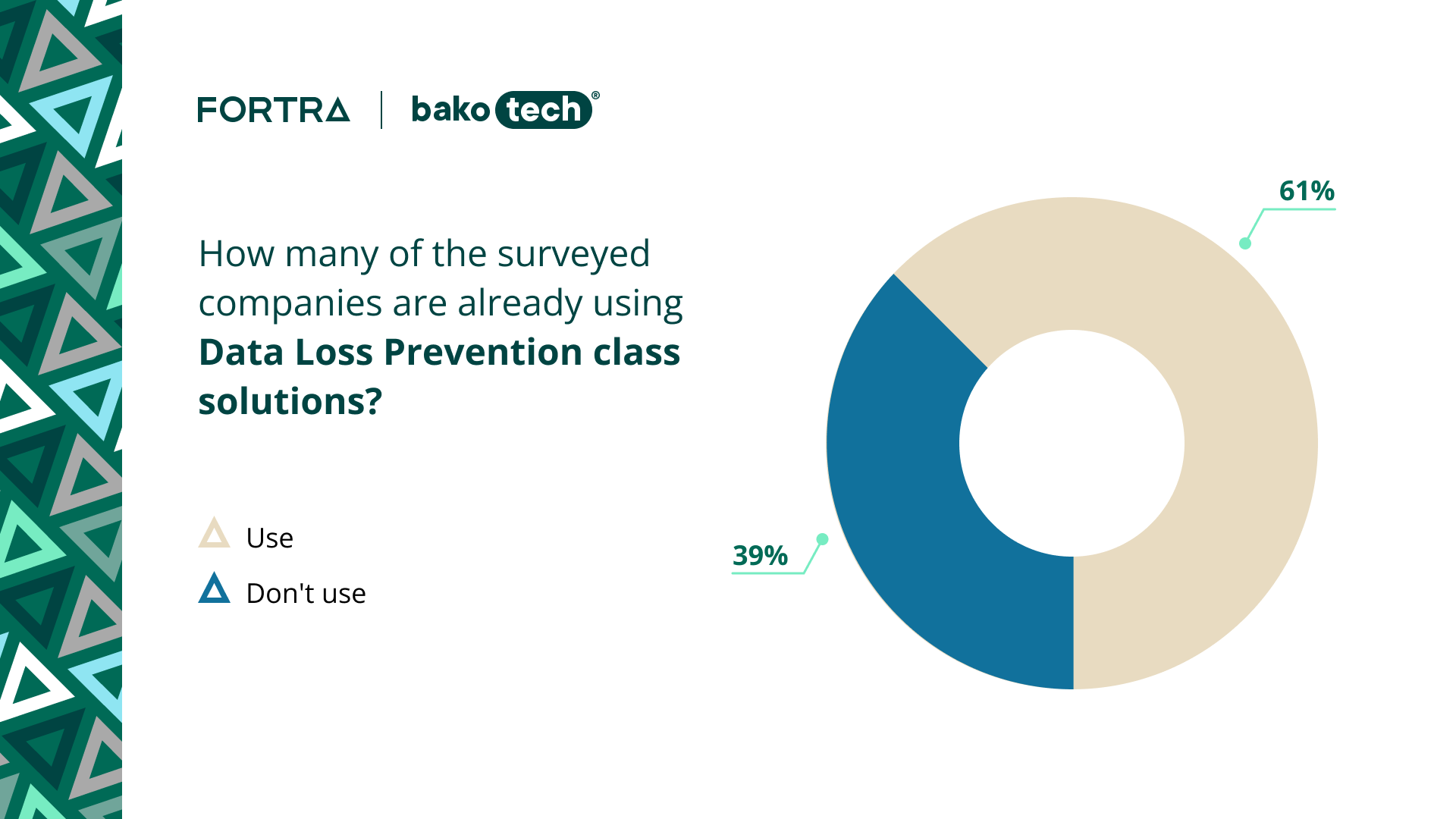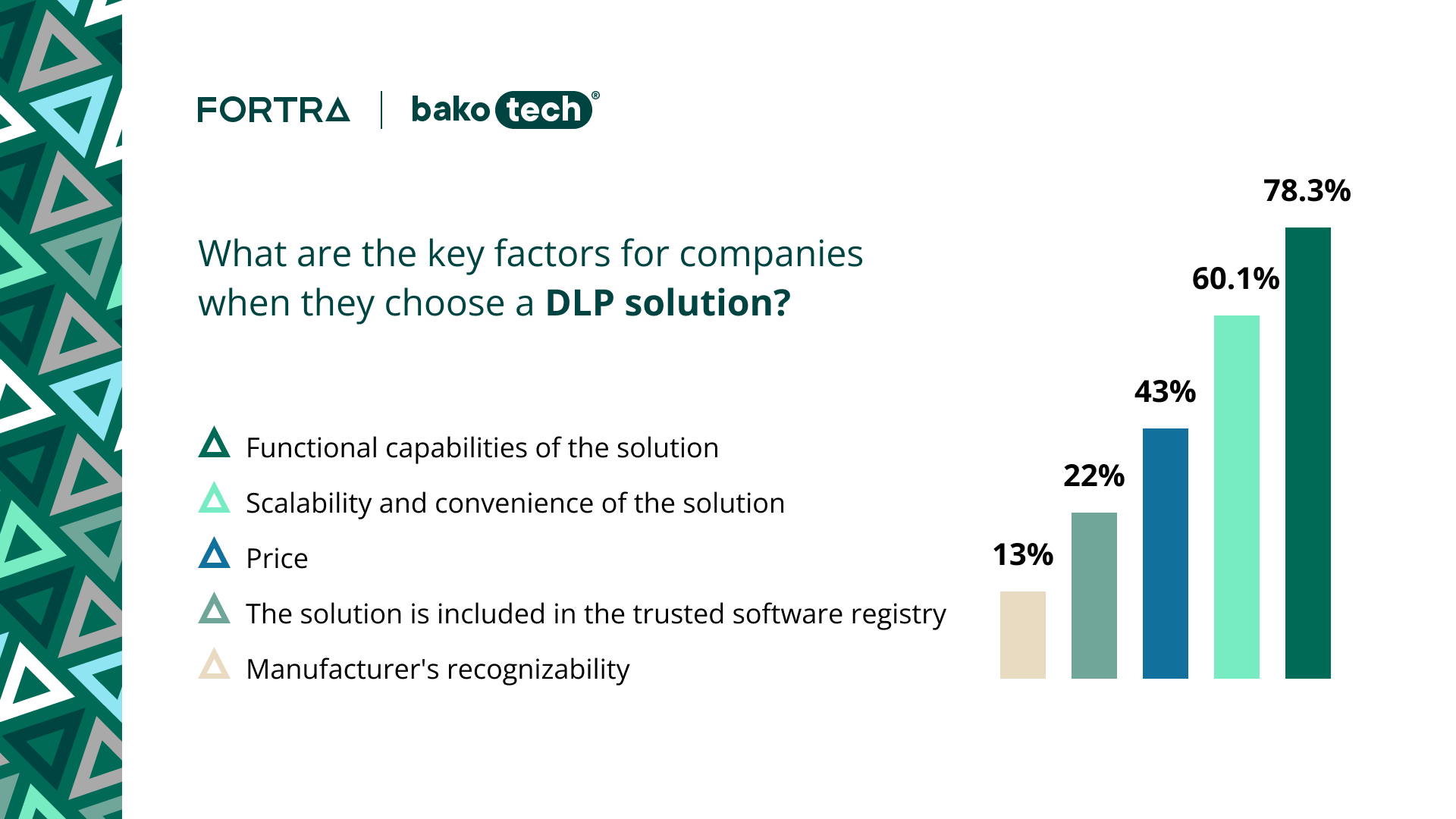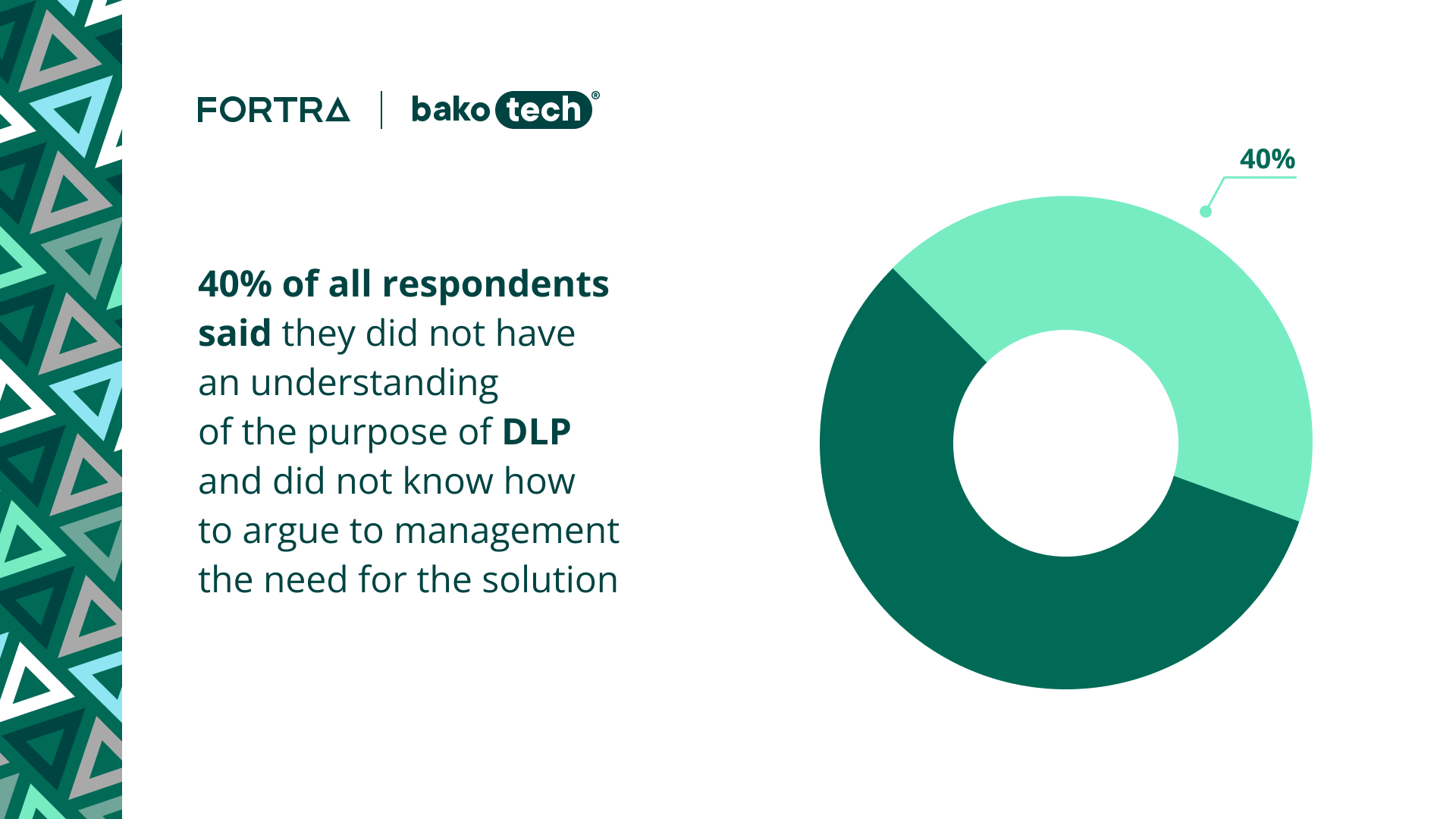Choosing and implementing data loss prevention tools is not an easy task. BAKOTECH has conducted a study where it asked users and those who are just choosing DLP technology what obstacles they most often face and what prevents them from building effective data protection.
DLP (Data loss prevention) is a security solution that identifies and helps prevent the unsafe or inappropriate exchange, transfer, or use of sensitive data.
Companies from Ukraine, Central Asia, Moldova, Azerbaijan, and Georgia took part in the survey. The list of questions covered various aspects, such as regulatory compliance, employee awareness of data protection, their understanding of the need for DLP solutions, and obstacles to their implementation.
The participants came from various sectors: banking, industry, IT, etc. The analysis of all responses allowed us to identify the main challenges related to data protection. And BAKOTECH experts added their advice on how to solve the most common problems based on the DLP solution from Fortra.

Results
As of today, most respondents are already working with DLP solutions. Almost 40% of the respondents do not use DLP, but are actively interested and plan to implement this technology in their company.
The general conclusion of the survey was obvious, but no less important: all respondents noted that data breaches are a serious risk for companies that can lead to financial and reputational losses. This makes DLP solutions attractive to companies. However, they face difficulties at the stage of selection and configuration.

The most common data protection issues
The survey results highlighted a wide range of problematic issues. Experts offer to analyze the most popular ones.
Lack of security culture
Insufficient attention to security culture among employees often causes incidents.
What can be done: Invest in training your employees on data security rules and establish clear policies and procedures to ensure compliance.

Lack of understanding of the need for a DLP solution and its goals
Some companies don’t understand why they need DLP technology and how it can impact security. And without clear goals, there’s a risk of not using the solution to its full potential.
Analyze your needs and data risks and determine how DLP can help in your specific case. To do this, focus on measurable performance indicators, such as reducing the number of data breaches. Often, project KPIs are outlined in terms of timeframes: DLP can be implemented in 2 months in the monitoring and basic blocking mode and in about a year in the all-inclusive mode.

Non-compliance with requirements
27% of respondents said they faced a compliance issue when choosing a DLP solution.
Meanwhile, compliance is an important component of a strategy to ensure the security and confidentiality of information, especially in the face of ever-increasing cyber threats.
Selecting and installing the right solution is the first step. Choose vendors that offer a turnkey policy that simplifies the task of compliance.

Confusion over the definition of sensitive data
Nearly a quarter of all respondents are unsure if they have a good understanding of what data in their organization needs to be protected.
Perform an analysis and identify the important data that needs special protection. Then develop a strategy to categorize the data and provide recommendations for protecting each category. This will help to clarify the focus of measures to prevent information leakage.
Also, actively involve employees in the classification process and consider a custom data classification solution, as employees know best which of their data is sensitive.
Obstacles during implementation
Attempts to implement a product on your own can sometimes be hampered by organizational changes, incompatibility with the company’s infrastructure, misconfiguration, and more.
Assess the compatibility of the DLP solution with your existing infrastructure. Pre-determine the need for integrations and develop a migration plan to minimize the impact on business processes. You can choose between on-premises and cloud-based infrastructure. However, the centerpiece of any DLP solution is the software that is installed on computers.
Take advantage of the help of distributors and manufacturers during the implementation phase. Expert support will help to significantly speed up the process of implementing DLP to meet your business needs, reducing the risk of errors.

C-Level doesn’t understand the benefits of DLP
While C-level executives expect to receive an adequate level of data protection, sometimes the need for DLP is overlooked. 40% of respondents said they have difficulty convincing executives to invest in this technology.
Risks need to be assessed and categorized. The more sensitive the data, the more relevant a DLP solution is for your company.
Explain to management that DLP helps control the flow of sensitive information by preventing unwanted leaks. Emphasize that many regulators (GDPR, HIPAA, or PCI DSS) require companies to provide an adequate level of protection for personal data and other sensitive information. Implementing DLP will help the company comply with these requirements and avoid fines.
Instead of conclusions
A DLP solution is a tool that can solve a whole range of problems: from preventing data leaks to ensuring compliance with cybersecurity requirements.
Perhaps you are just considering implementing DLP, or perhaps you are already looking for a vendor – in both cases, BAKOTECH experts are ready to provide their support.









